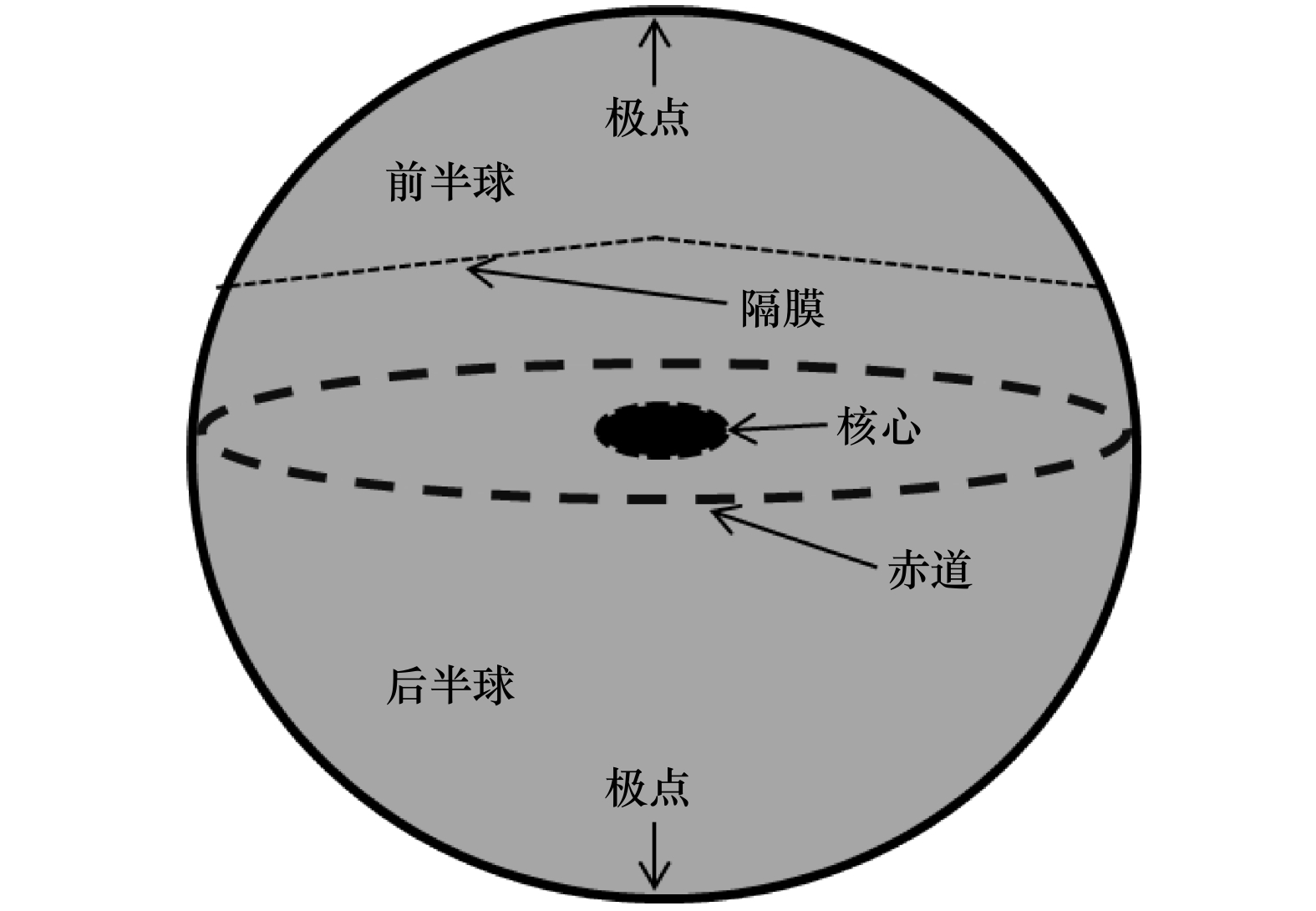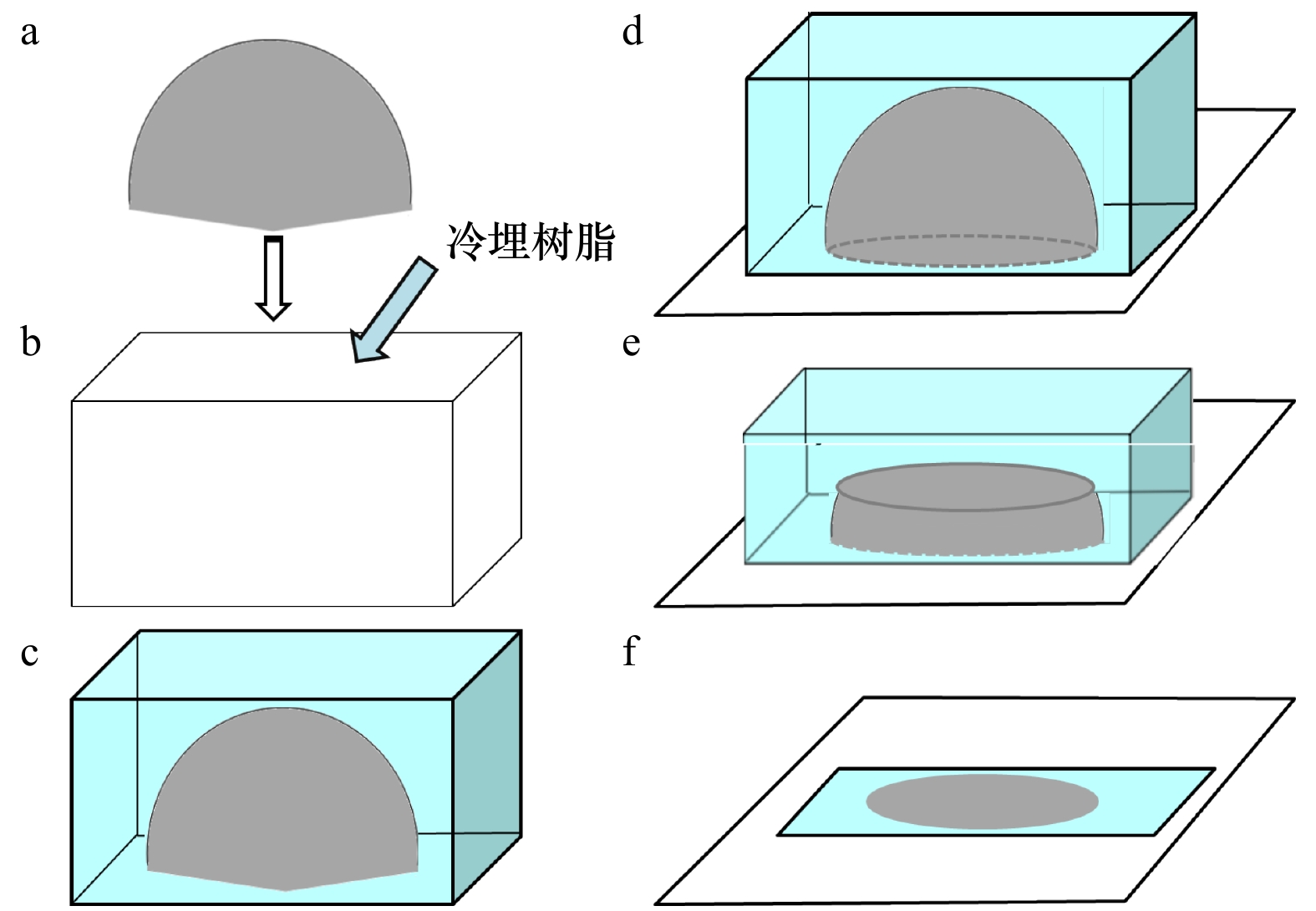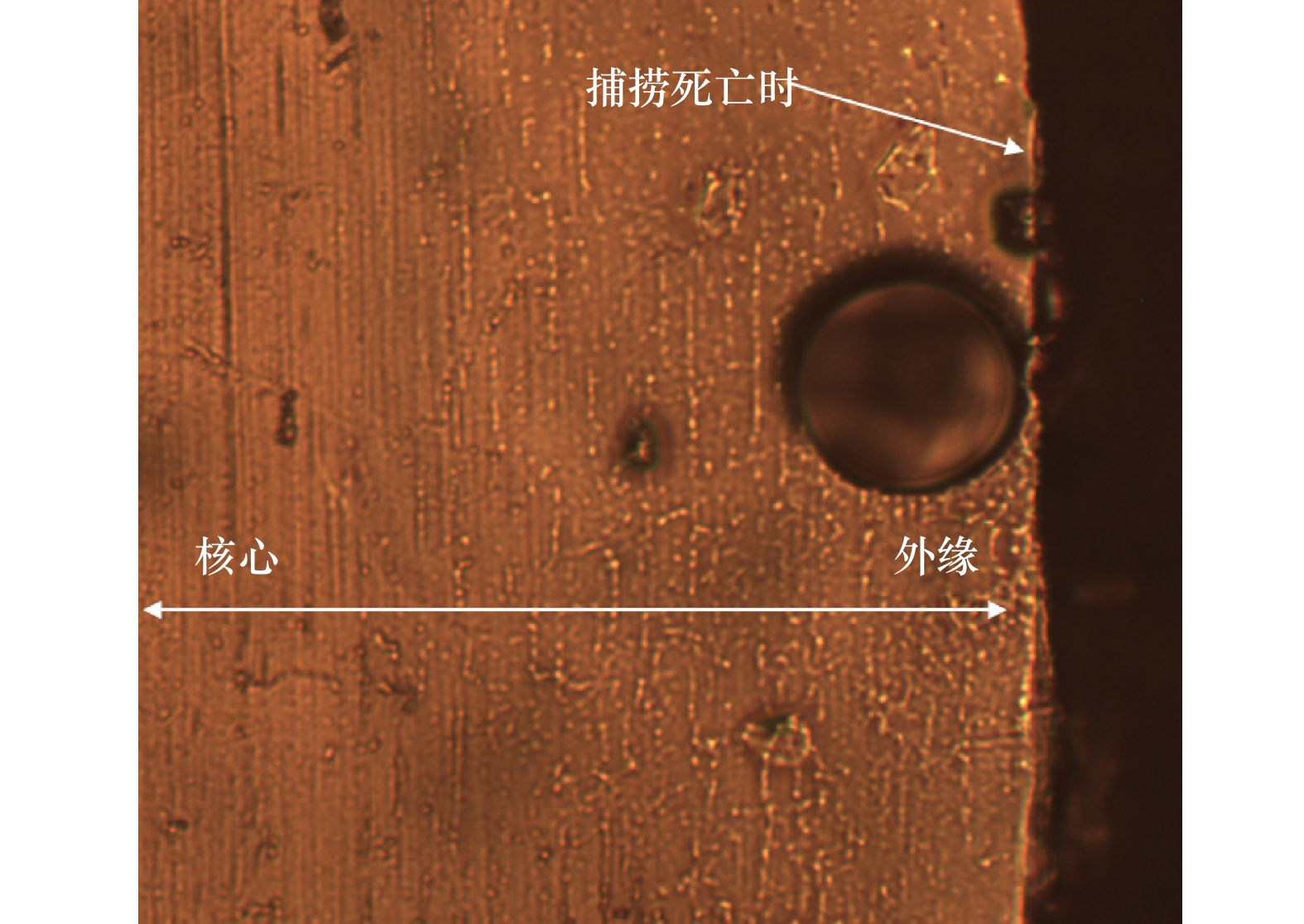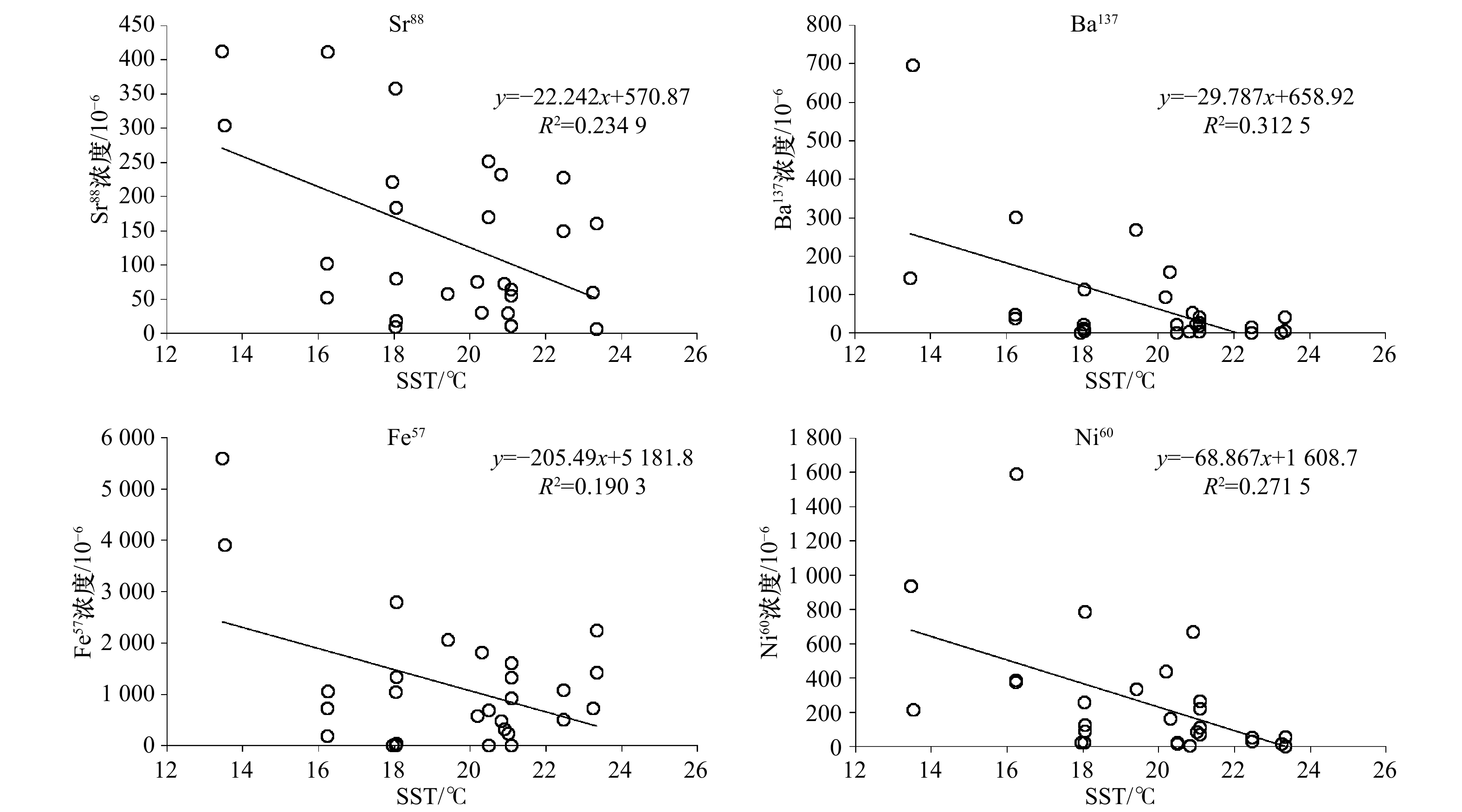Geographical differences and their relationship with sea surface temperature of trace elements in the eye lenses of Jumbo flying squid (Dosidicus gigas)
-
摘要: 本研究以2015年和2017年我国远洋鱿钓渔船在东南太平洋的厄瓜多尔、秘鲁和智利公海生产时采集的茎柔鱼眼睛晶体为研究材料,采用LA-ICPMS测定了眼睛晶体外缘的微量元素,比较微量元素地理区域间差异,分析微量元素浓度与茎柔鱼栖息水温的关系。结果显示,厄瓜多尔、秘鲁和智利公海的茎柔鱼眼睛晶体外缘Mg25、Ni60 、Cu63、Sr88和Ba137等元素在3个海区之间存在显著差异(p<0.05),Na23、Al27、Si29、P31、Ca43、Mn55、Zn66和Pb等元素在两两海区之间均不存在显著差异(p>0.05)。除了Sr88、Ba137、Fe57和Ni60与海表面温度呈显著的线性负相关,其他元素与海表面温度均无显著的相关关系。分析认为,Sr88、Ba137、Fe57和Ni60均可以看作茎柔鱼生活水温的指示元素,Ba137元素还可以看作茎柔鱼生活水深以及上升流的指示元素。研究认为,眼睛晶体微量元素可用于头足类栖息环境的重建。Abstract: Samples of Jumbo flying squid (Dosidicus gigas) were collected from Chinese squid jigging vessels in the high seas of Ecuador, Peru and Chile in the southeast Pacific Ocean in 2015 and 2017. The trace elements in the eye lenses of D. gigas were measured to study the geographical differences and their relationship with sea surface temperature. The results showed that elements such as Mg25, Ni60, Cu63, Sr88 and Ba137 in the peripheral part of eye lenses of D. gigas in the high seas of Ecuador, Peru and Chile were significant difference, while there were no significant differences between each two sea areas in the elements of Na23, Al27, Si29, P31, Ca43, Mn55, Zn66 and Pb. Except for Sr88, Ba137, Fe57 and Ni60, which showed significantly linear negative correlations with SST (p<0.05), there were no significant correlations with SST in the other elements (p>0.05). Sr88, Ba137, Fe57 and Ni60 could be regarded as indicator elements of the ambient temperature of D. gigas, and Ba137 could also be regarded as indicator element of the water depth and upwelling. Consequently, trace elements in eye lenses could be used to reconstruct the habitat environment of cephalopod.
-
Key words:
- Jumbo flying squid /
- eye lenses /
- trace elements /
- sea surface temperature /
- Southeastern Pacific Ocean
-
表 1 厄瓜多尔、秘鲁和智利公海茎柔鱼样本信息
Tab. 1 Sampling information of Dosidicus gigas in the high seas of Ecuador, Peru and Chile
海区 采样日期 采样地点 样本量/尾 胴长/mm 体质量/g 厄瓜多尔 2017年7−8月 3°21′~8°26′S,84°07′~91°52′W 10 210~357 264~1 295 秘鲁 2015年6−9月 9°16′~15°22′S,79°45′~85°03′W 13 226~352 280~1 301 智利 2015年11−12月 37°06′~40°00′S,79°00′~83°00′W 5 301~470 538~3 012 表 2 厄瓜多尔、秘鲁和智利公海茎柔鱼眼睛晶体外缘微量元素浓度
Tab. 2 Concentration of trace elements in peripheral eye lenses of Dosidicus gigas in the high seas of Ecuador, Peru and Chile
元素 浓度/10−6 三海区总体 厄瓜多尔 秘鲁 智利 Na23 28 397±23 103 19 991±14 855a 31 662±28 466a 36 720±19 430a Mg25 10 629±9 992 3 843±4 420a 13 875±11 586b 15 762±6 707b Al27 96 260±125 462 131 503±133 837a 75 553±140 866a 79 615±39 657a Si29 33 878±19 111 31 156±19 894a 39 253±20 382a 25 348±11 186a P31 247 985±111 951 221 034±140 584a 268 912±109 203a 247 474±33 373a K39 15 484±12 565 8 167±5 436a 20 487±1 585 b 17 110±5 166ab Ca43 68 303±95 317 90 218±155 137a 43 776±20 838a 88 240±47 102a Mn55 510±971 188±286a 534±1 241a 1 091±933a Fe57 1 169±1 272 1 099±757ab 790±834a 2 296±234b Ni60 264±357 218±216a 131±210a 701±567 b Cu63 1 177±1 122 1 836±1 494a 623±604b 1 302±523ab Zn66 2 051±1 601 1 195±1 203a 2 404±1 895a 2 845±492a Sr88 137±124 75±71a 138±109a 257±170b Ba137 77±144 56±80a 29±49a 245±273b Pb 34±21 27±13a 37±27a 45±14a 注:以a、b表示海区间元素浓度差异水平 (p<0.05)。 表 3 厄瓜多尔、秘鲁和智利公海茎柔鱼眼睛晶外缘微量元素方差分析结果
Tab. 3 ANOVA results of trace elements in peripheral eye lenses of Dosidicus gigas in the high seas of Ecuador, Peru and Chile
元素 方差平方和 均方差 自由度1 自由度2 F p Na23 1.19×109 5.96×108 2 26 1.127 0.34 Mg25 7.29×108 3.65×108 2 26 4.635 0.019 Al27 1.94×1010 9.69×109 2 26 0.597 0.558 Si29 8.14×108 4.07×108 2 26 1.124 0.341 P31 1.30×1010 6.48×109 2 26 0.498 0.614 K39 8.74×108 4.37×109 2 26 3.224 0.057 Ca43 1.46×1010 7.31×109 2 26 0.792 0.464 Mn55 2 734 390.992 1 367 195.496 2 26 1.506 0.241 Fe57 8 268 121.63 4 134 060.815 2 26 2.917 0.073 Ni60 1 207 061.18 603 530.59 2 26 6.755 0.005 Cu63 8 410 317.756 4 205 158.878 2 26 4.112 0.029 Zn66 12 099 595.63 6 049 797.816 2 26 2.649 0.09 Sr88 110 045.401 55 022.701 2 26 4.513 0.021 Ba137 174 712.54 87 356.27 2 26 5.679 0.009 Pb 1 397.56 698.78 2 26 1.589 0.224 -
[1] Jereb P, Roper C F E. Cephalopods of the World: an Annotated and Illustrated Catalogue of Cephalopod Species Known to Date[M]. Rome: FAO, 2010: 315−318. [2] Keyl F, Argüelles J, Mariátegui L, et al. A hypothesis on range expansion and spatio-temporal shifts in size-at-maturity of jumbo squid (Dosidicus gigas) in the eastern Pacific Ocean[J]. California Cooperative Oceanic Fisheries Investigations Report, 2008, 49: 119−128. [3] Zeidberg L D, Robison B H. Invasive range expansion by the Humboldt squid, Dosidicus gigas, in the eastern North Pacific[J]. Proceedings of the National Academy of Sciences of the United States of America, 2008, 104(31): 12948−12950. [4] Waluda C M, Yamashiro C, Rodhouse P G. Influence of the ENSO cycle on the light-fishery for Dosidicus gigas in the Peru Current: an analysis of remotely sensed data[J]. Fisheries Research, 2006, 79(1/2): 56−63. [5] Argüelles J, Rodhouse P G, Villegas P, et al. Age, growth and population structure of the jumbo flying squid Dosidicus gigas in Peruvian waters[J]. Fisheries Research, 2001, 54(1): 51−61. doi: 10.1016/S0165-7836(01)00380-0 [6] Liu Bilin, Chen Xinjun, Chen Yong, et al. Geographic variation in statolith trace elements of the Humboldt squid, Dosidicus gigas, in high seas of Eastern Pacific Ocean[J]. Marine Biology, 2013, 160(11): 2853−2862. doi: 10.1007/s00227-013-2276-7 [7] Taipe A, Yamashiro C, Mariategui L, et al. Distribution and concentrations of jumbo flying squid (Dosidicus gigas) off the Peruvian coast between 1991 and 1999[J]. Fisheries Research, 2001, 54(1): 21−32. doi: 10.1016/S0165-7836(01)00377-0 [8] Nicol J A C. The Eyes of Fishes[M]. Oxford: Oxford University Press, 1989. [9] Horwitz J. The function of alpha-crystallin[J]. Investigative Ophthalmology & Visual Science, 1993, 34(1): 10−22. [10] Gillanders B M. Trace metals in four structures of fish and their use for estimates of stock structure[J]. Fishery Bulletin-National Oceanic and Atmospheric Administration, 2001, 99(3): 410−419. [11] Ferenbaugh J K. Elemental analysis of otoliths and eye lenses in the assessment of Steller Sea lion diets[D]. Texas: Texas Tech University, 2007. [12] Liu Bilin, Chen Xinjun, Chen Yong, et al. Trace elements in the statoliths of jumbo flying squid off the Exclusive Economic Zones of Chile and Peru[J]. Marine Ecology: Progress Series, 2011, 429: 93−101. doi: 10.3354/meps09106 [13] Ikeda Y, Arai N, Sakamoto W, et al. Relationship between statoliths and environmental variables in cephalopod[J]. International Journal of PIXE, 1996, 6(1/2): 339−345. [14] Arkhipkin A I, Campana S E, Fitzgerald J, et al. Spatial and temporal variation in elemental signatures of statoliths from the Patagonian longfin squid (Loligo gahi)[J]. Canadian Journal of Fisheries and Aquatic Sciences, 2004, 61(7): 1212−1224. doi: 10.1139/f04-075 [15] Yatsu A, Mochioka N, Morishita K, et al. Strontium/calcium ratios in statoliths of the neon flying squid, Ommastrephes bartrami (Cephalopoda), in the North Pacific Ocean[J]. Marine Biology, 1998, 131(2): 275−282. doi: 10.1007/s002270050320 [16] Doubleday Z A, Pecl G T, Semmens J M, et al. Stylet elemental signatures indicate population structure in a holobenthic octopus species, Octopus pallidus[J]. Marine Ecology Progress Series, 2008, 371: 1−10. doi: 10.3354/meps07722 [17] Napoleão P, Pinheiro T, Reis C S. Element characterization of the vestigial shell of Octopus vulgaris Cuvier, 1797[J]. Boletín, Instituto Español de Oceanografía, 2003, 19(1/4): 509−512. [18] Northern T J. Investigating the post mortem applications of hard parts from two common New Zealand Squid Species: Onykia ingens and Nototodarus sloanii[D]. Dunedin, New Zealand: University of Otago, 2016. [19] 方舟. 基于角质颚的北太平洋柔鱼渔业生态学研究[D]. 上海: 上海海洋大学, 2016.Fang Zhou. Fisheries ecology of neon flying squid Ommastrephes bartramii in North Pacific Ocean based on beak[D]. Shanghai: Shanghai Ocean University, 2016. [20] Liu Bilin, Chen Yong, Chen Xinjun. Spatial difference in elemental signatures within early ontogenetic statolith for identifying Jumbo flying squid natal origins[J]. Fisheries Oceanography, 2015, 24(4): 335−346. doi: 10.1111/fog.12112 [21] Zumholz K, Hansteen T H, Hillion F, et al. Elemental distribution in cephalopod statoliths: NanoSIMS provides new insights into nano-scale structure[J]. Reviews in Fish Biology and Fisheries, 2007, 17(2): 487−491. [22] Ikeda Y, Arai N, Kidokoro H, et al. Strontium: calcium ratios in statoliths of Japanese common squid Todarodes pacificus (Cephalopoda: Ommastrephidae) as indicators of migratory behaviour[J]. Marine Ecology Progress Series, 2003, 251: 169−179. doi: 10.3354/meps251169 [23] Dove S G, Kingsford M J. Use of otoliths and eye lenses for measuring trace-metal incorporation in fishes: a biogeographic study[J]. Marine Biology, 1998, 130(3): 377−387. doi: 10.1007/s002270050258 [24] Kingsford M J, Gillanders B M. Variation in concentrations of trace elements in otoliths and eye lenses of a temperate reef fish, Parma microlepis, as a function of depth, spatial scale, and age[J]. Marine Biology, 2000, 137(3): 403−414. doi: 10.1007/s002270000304 [25] Sturm M. Migration studies of fish by measurement of strontium isotope ratios and multi-elemental patterns in otoliths using LA-ICP-MS[D]. Vienna: University of Natural Resources and Applied Life Sciences, 2008. [26] 金岳. 基于硬组织的中国近海枪乌贼渔业生物学研究[D]. 上海: 上海海洋大学, 2018.Jin Yue. Fishery biology of Loliginidae in China Seas based on hard tissues[D]. Shanghai: Shanghai Ocean University, 2018. [27] Zong Keqing, Klemd R, Yuan Yu, et al. The assembly of Rodinia: the correlation of early Neoproterozoic (ca. 900 Ma) high-grade metamorphism and continental arc formation in the southern Beishan Orogen, southern Central Asian Orogenic Belt (CAOB)[J]. Precambrian Research, 2017, 290: 32−48. doi: 10.1016/j.precamres.2016.12.010 [28] Soto-Jiménez M F. Trace element trophic transfer in aquatic food webs[J]. Hidrobiológica, 2011, 21(3): 239−248. [29] Zumholz K, Hansteen T H, Klügel A, et al. Food effects on statolith composition of the common cuttlefish (Sepia officinalis)[J]. Marine Biology, 2006, 150(2): 237−244. doi: 10.1007/s00227-006-0342-0 [30] Rooker J R, Secor D H, Zdanowicz V S, et al. Discrimination of northern bluefin tuna from nursery areas in the Pacific Ocean using otolith chemistry[J]. Marine Ecology Progress Series, 2001, 218: 275−282. doi: 10.3354/meps218275 [31] Ashford J R, Jones C M, Hofman E, et al. Can otolith elemental signatures record the capture site of Patagonian toothfish (Dissostichus eleginoides), a fully marine fish in the southern ocean?[J]. Canadian Journal of Fisheries and Aquatic Sciences, 2005, 62(12): 2832−2840. doi: 10.1139/f05-191 [32] Yamane K, Shirai K, Nagakura Y, et al. Spatial variation of otolith elemental composition of the Pacific herring Clupea pallasii in northern Japan[J]. Aquatic Biology, 2010, 10: 283−290. doi: 10.3354/ab00291 [33] Swart P K, Elderfield H, Greaves M J. A high-resolution calibration of Sr/Ca thermometry using the Caribbean coral Montastraea annularis[J]. Geochemistry, Geophysics, Geosystems, 2002, 3(11): 1−11. [34] Zacherl D C. Spatial and temporal variation in statolith and protoconch trace elements as natural tags to track larval dispersal[J]. Marine Ecology Progress Series, 2005, 290: 145−163. doi: 10.3354/meps290145 [35] Campana S E. Chemistry and composition of fish otoliths: pathways, mechanisms and applications[J]. Marine Ecology Progress Series, 1999, 188: 263−297. doi: 10.3354/meps188263 [36] Ikeda Y, Arai N, Sakamoto W, et al. Preliminary report on PIXE analysis for trace elements of Octopus dofleini statoliths[J]. Fisheries Science, 1999, 65(1): 161−162. doi: 10.2331/fishsci.65.161 [37] Zumholz K, Klügel A, Hansteen T H, et al. Statolith microchemistry traces the environmental history of the boreoatlantic armhook squid Gonatus fabricii[J]. Marine Ecology Progress Series, 2007, 333: 195−204. doi: 10.3354/meps333195 [38] Ikeda Y, Arai N, Sakamoto W, et al. Comparison on trace elements in squid statoliths of different species’ origin: as available key for taxonomic and phylogenetic study[J]. International Journal of PIXE, 1997, 7(3/4): 141−146. [39] Ikeda Y, Yatsu A, Arai N, et al. Concentration of statolith trace elements in the jumbo fying squid during El Niño and non-El Niño years in the eastern Pacic[J]. Journal of the Marine Biological Association of the United Kingdom, 2002, 82: 863−866. [40] Zacherl D C, Manríquez P H, Paradis G, et al. Trace elemental fingerprinting of gastropod statoliths to study larval dispersal trajectories[J]. Marine Ecology Progress Series, 2003, 248: 297−303. doi: 10.3354/meps248297 [41] Bath G E, Thorrold S R, Jones C M, et al. Strontium and barium uptake in aragonitic otoliths of marine fish[J]. Geochimica et Cosmochimica Acta, 2000, 64(10): 1705−1714. doi: 10.1016/S0016-7037(99)00419-6 [42] Zumholz K, Hansteen T H, Piatkowski U, et al. Influence of temperature and salinity on the trace element incorporation into statoliths of the common cuttlefish (Sepia officinalis)[J]. Marine Biology, 2007, 151(4): 1321−1330. doi: 10.1007/s00227-006-0564-1 -




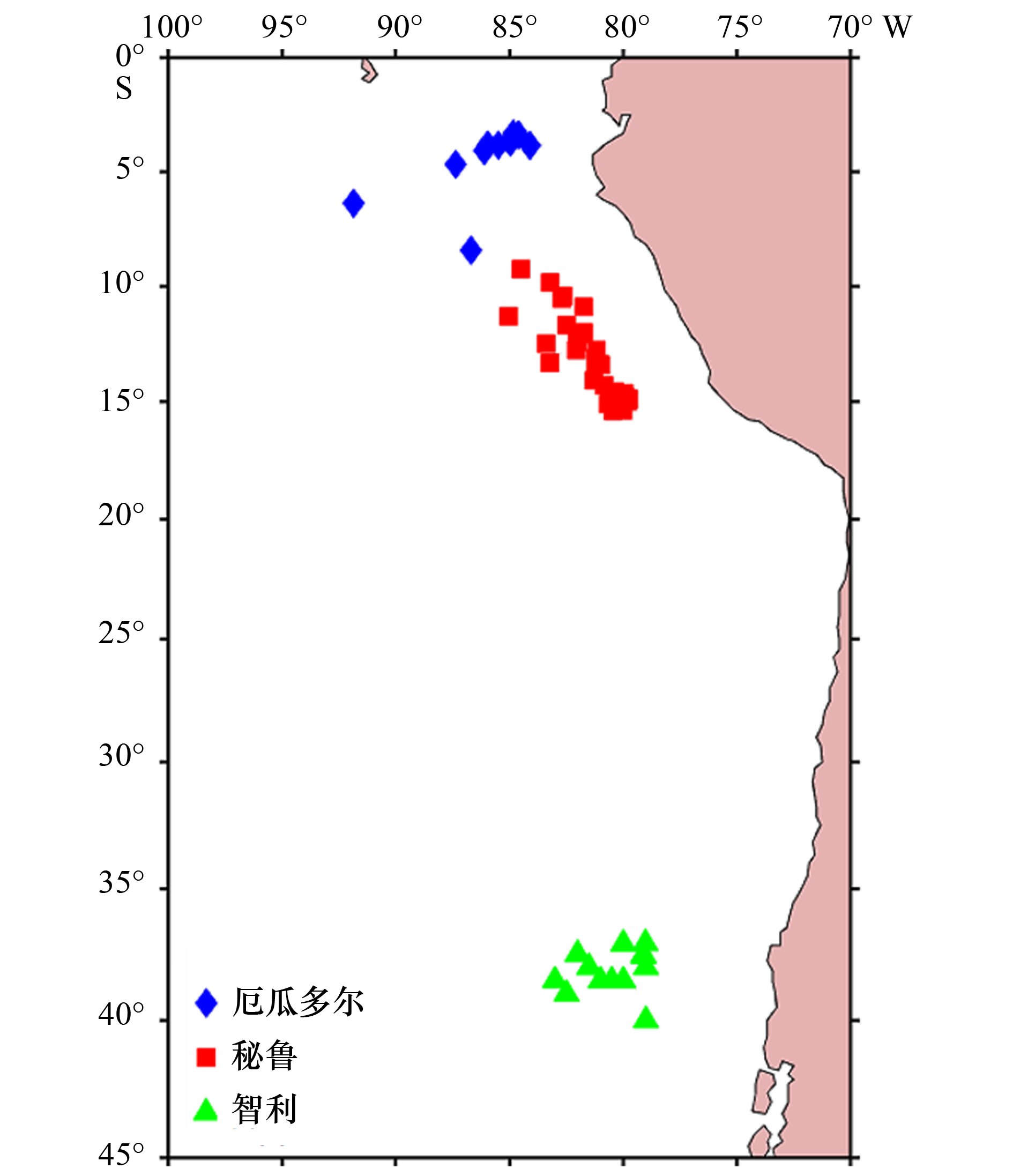
 下载:
下载:
